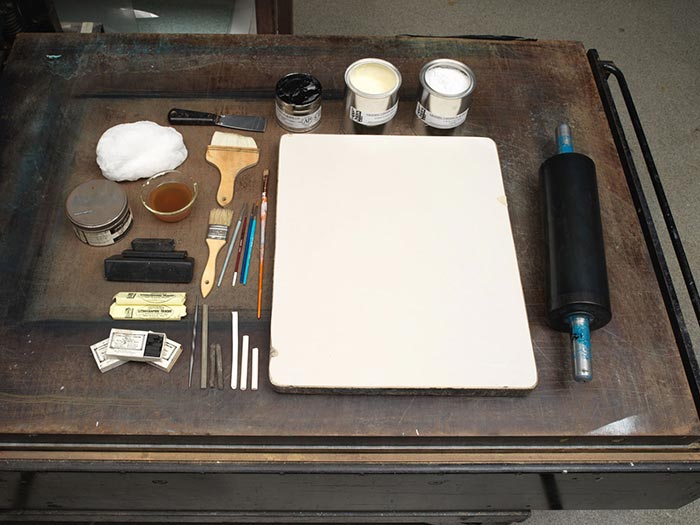A Skin Game: Dot ish French Calf hand sewed
V. Ostenbach American
Publisher Currier & Ives American
Not on view
Some late nineteenth-century prints by Currier & Ives depict racist and ethnic stereotypes that are offensive and disturbing. The Metropolitan Museum of Art preserves such works to shed light on their historical context and to enable the study and evaluation of racism and prejudice.
This scene caricatures a Black (African-American) man and a German-Jewish shoemaker; both are shown in profile facing each other in a shop interior. At right, the Black customer sits on a stool; his left foot wears a red sock exposing his toes, while his right foot is in a black shoe. The Black man inspects the sole of a black boot he is about to try on. At left, an old bearded man (with a large nose), who wears an apron, stands gesturing with his raised right hand, while his left hand holds a boot; the title caption (inscribed in the print's bottom margin) refers to what he is saying about the quality of the boot's leather and workmanship. At the far right, there is a black iron stove. At the far left, there is a seated cat, and a stool beside a work table covered with tools. The background wall is comprised of large drawers.
This lithograph is the companion to "A Skinner Skinned: Oh! Mein Gootness! Der Bottom Ish Knocked Out" (Peters 485; Gale 5943; see Metropolitan Museum of Art accession no. 52.632.158).
Nathaniel Currier, whose successful New York-based lithography firm began in 1835, produced thousands of prints in various sizes that together create a vivid panorama of mid-to-late nineteenth century American life and its history. People eagerly acquired such lithographs featuring picturesque scenery, rural and city views, ships, railroads, portraits, hunting and fishing scenes, domestic life and numerous other subjects, as an inexpensive way to decorate their homes or business establishments. As the firm expanded, Nathaniel included his younger brother Charles in the business. In 1857, James Merritt Ives (the firm's accountant since 1852 and Charles's brother-in-law) was made a business partner; subsequently renamed Currier & Ives, the firm continued until 1907.

